The subject of today’s review is the Panasonic TX-L42E5B 2D-only LED LCD TV, an entry-level product geared towards the budget-conscious within the company’s 2012 lineup of HDTVs, although its price is probably closer to the lower spectrum of midrange models. So with that in mind, let’s see how this flat-screen television stacks up against (high-tier) low-end and (low-tier) midrange offerings from competing brands.
<!-- google_ad_client = 'pub-2887677957235196'; google_ad_slot = '4990177225'; google_ad_width = 336; google_ad_height = 280; //-->
**Note:**While we did not test the smaller, 32-inch Panasonic TX-L32E5B, there shouldn’t be any drastic difference in picture performance considering that all models within the Viera E5 range share similar specifications.
Design-wise the TX-L42E5 doesn’t do anything special to stand out from the crowd. The glass border resembles previous Samsung LCD TVs, as does the piano finish. Enclosed in glossy plastic shell, the base lacks swivel functionality. The overall presentation is very fitting to its price tag.
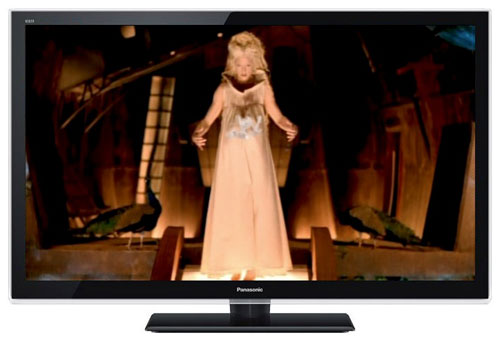
Assembly of the table-tap stand is quite straightforward, owing to the two-step method. The on-screen welcome guide is very efficient and simple to follow.
Like most slim LED TVs, all HDMI ports on the TX-L42E5B are side-mounted, but there’s enough spacing for the cables not to be seen. Both component and RGB SCART connections require the supplied proprietary adapters.
The Panasonic TX-L42E5 features the same GUI found on last year’s Viera LED LCD televisions. Navigating through various layers of the menu is effortless to say the least, thanks to the clean layout and rapid responsiveness.
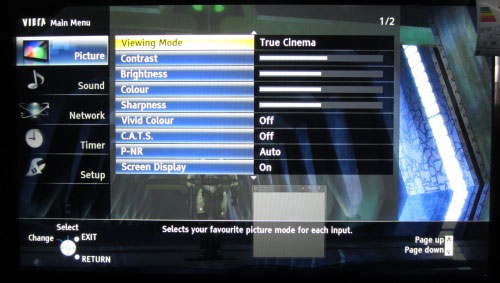
However, Panasonic still hasn’t added numerical values to basic options like [Contrast] and [Colour], which can be frustrating during calibration.
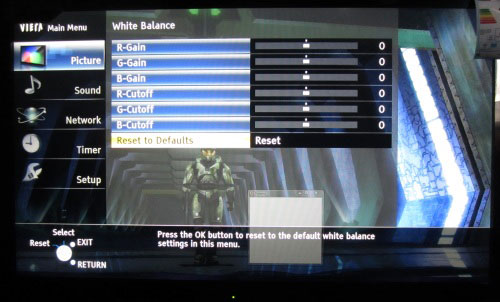
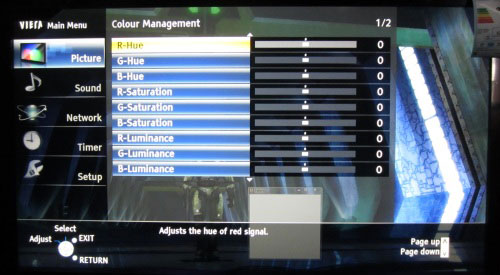
It is also worth noting that the image reset option is not accompanied by a confirmation warning, which means settings can be lost unless they are locked via Pass Code. The Panasonic E5 series doesn’t support independent source customisation.
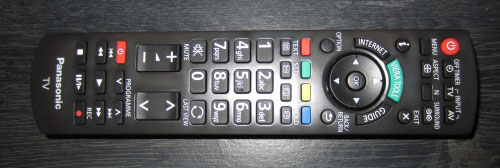
The supplied remote control is typical of Panasonic’s signature design with one exception; the buttons are stiffer compared to those supplied with high-end models.
Accurate greyscale and gamma are vital for realistic portrayal of any given image, so the display should be calibrated to a set of standards used by the video and broadcast industry. As far as HDTV is concerned, the set standard for colour space is Rec. 709 which is similar to sRGB, and both standards share identical white point D65 (we chose a gamma value of 2.4).
Greyscale calibration ensures all greys between black and white are free from colour dominance, which is achieved by assigning the RGB values to 6500K Correlated Colour Temperature (CCT). Regrettably, it is not possible for a consumer-grade display to yield 100% accuracy, so the goal is to maintain errors within acceptable levels as indicated by Delta E (dE) values. The Panasonic TX-L42E5B features 2-point white balance controls which we used to calibrate greyscale.
![Post-calibration CCT in [True Cinema] mode](https://www.hdtvtest.co.uk/news/wp-content/uploads/2018/04/hdtv_Panasonic-TXL42E5_cct.jpg) |
| Post-calibration CCT in [True Cinema] mode |
![Post-calibration RGB tracking in [True Cinema] mode](https://www.hdtvtest.co.uk/news/wp-content/uploads/2018/04/hdtv_Panasonic-TXL42E5_post-rgb.jpg) |
| Post-calibration RGB tracking in [True Cinema] mode |
![Post-calibration delta errors in [True Cinema] mode](https://www.hdtvtest.co.uk/news/wp-content/uploads/2018/04/hdtv_Panasonic-TXL42E5_greyscale-de.jpg) |
| Post-calibration delta errors (dEs) in [True Cinema] mode |
The TX-L42E5 is equipped with a 3-axis colour management system (CMS), which is unfortunately only limited to the primary colours of red, green and blue (RGB). Trying to correct the hue and saturation of green introduced major errors in other colours, so it was left as is.
![Post-calibration CIE chart in [True Cinema] mode](https://www.hdtvtest.co.uk/news/wp-content/uploads/2018/04/hdtv_Panasonic-TXL42E5_post-cie.jpg) |
| CIE chart with reference to HD Rec.709 |
![Colour luminance levels in [True Cinema] mode](https://www.hdtvtest.co.uk/news/wp-content/uploads/2018/04/hdtv_Panasonic-TXL42E5_colour-luminance.jpg) |
| Colour luminance levels in [True Cinema] mode |
| Colour saturation tracking in [True Cinema] mode |
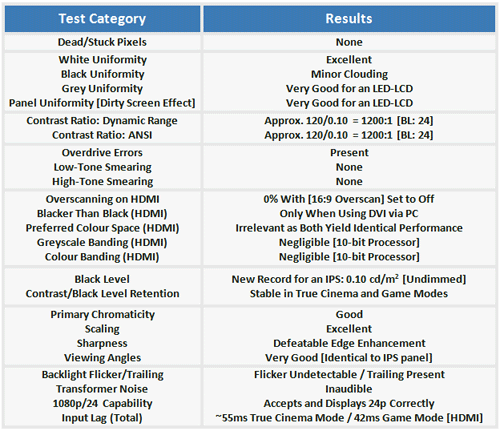
| Default [Normal] mode | 47 watts |
| Calibrated [True Cinema] mode | 42 watts |
| Standby | 1 watt |
Due the complex nature of LCDs, they are prone to a visual phenomenon called dirty screen effect (DSE), which often occurs during manufacturing and sometimes in transit. The severity can vary from one LCD panel to another, therefore the probability of obtaining a clean panel is entirely down to chance.
The TX-L42E5B review unit provided by Panasonic was free from most uniformity issues. Pure white tests did not reveal the common green, yellow and red tints, and at half brightness the panel did not exhibit any form of abnormality severe enough to hinder performance. The blacks were perfectly uniform. Since the test sample came from Panasonic, we cannot rule out the possibility that it was handpicked.
In [True Cinema] mode, the Panasonic TX-L42E5 with white level (contrast) set to 120 cd/m2 yielded dynamic range and ANSI contrast ratio of 1200:1, which is a new record for an S-IPS panel sourced from LG. It’s important to remember that Panasonic’s LCD TV range is the answer to plasma level performance in a brightly lit environment, and is never intended to compete with displays designed for dark environments. But, thanks to the record-breaking black level, as well as the glossy filter (which helps to increase perceived contrast), the TXL42E5B is suitable for semi-dark environments. Just don’t turn off the lights.
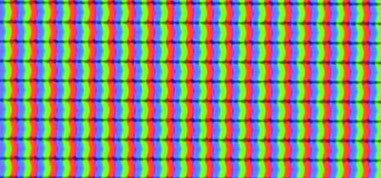
Furthermore, it was possible to obtain VA-quality black level of 0.06 cd/m2 by lowering the contrast (8 clicks right from 0) at the cost of top-end luminance, which then dropped to 80 cd/m2. It may not be to everyone’s taste, but when viewing dark movies (such as Aliens), the dip in luminance is hardly noticeable.
PixPerAn is an excellent tool to evaluate motion artefacts and as expected, the motion rendered by the Panasonic TX-L42E5B was free from artefacts caused by pixel lag. However, akin to most LED LCD televisions, the 42E5 suffered from ghosting effect (original image accompanied by two or more distinctive ghost images) during fast motion caused by out-of-sync backlight scanning. To reduce the effect, the contrast must be set to maximum, which is not recommended in home environment. The ghosting effect can only be observed on content that are free from blur or with negligible blur (for example sports and video games).

Overscan: Can be disabled via the Setup menu, but is applied to all external inputs by default.
Blacker-than-Black (HDMI): Yes, but only in DVI Mode.
Viewing Angle: Panasonic LCD TVs are known for their excellent viewing angles thanks to the IPS panel used. However, due to the absence of advanced components such as True-White Polarizer, blacks become lighter when viewed off-angle.
Sharpness: Defeatable sharpness. Resolves all 1080 lines when static.
To evaluate the image quality rendered by the Panasonic Viera TX-L42E5B, a small number of carefully chosen images were used to detect visible artefacts/errors. Aeon was used to detect errors in skin tone, luminance and depth; whereas Acela Express was used to detect greyscale and gamma errors in addition to black crush.

The TXL42E5 yielded excellent results following basic calibration in [True Cinema] mode. The mass shades of warm colours that envelop Charlize Theron’s face, neck and chest were clearly visible, very close to a calibrated display.

IPS panels have the best grayscale tracking of all current flat-panel televisions (with the possible exception of OLED TV). So as predicted, the performance of the 42E5 was excellent and comparable to the calibrated Dell 2209WA. There was no visible evidence of any serious black crush or any form of gamma error.
The majority of HD content were beautifully rendered by the TX-L42E5B thanks to the new and improved 10-bit processor, which amended the issues we’ve noted on its predecessors.
We failed to spot any form of error that would normally destroy or severely impact picture quality, which remained clean and faithful to the source. Thanks the wide viewing angle of IPS Mode, the image quality appeared very natural and realistic. There was no hint of translucent blacks that is common to VA panels with excessive gamma shift.
Speaking of blacks, the Panasonic TX-L42E5 did a fantastic job retaining an acceptable level of shadow detail in a dimly-lit environment. However, F1 did highlight the out-of-sync backlight issue – fast moving segments were accompanied by 2-3 after-images, which proved rather distracting.
Playback of 24p material was faithful to its source as expected from Panasonic. In fact, the motion is comparable to digital cinemas.
The TXL42E5B is sadly not gamer’s panel. The input lag is simply too high for fast-paced games requiring spilt-second inputs, and the motion blur was highly distracting when playing 60p games. It would be better to opt for plasma TVs, since they offer quick response and clean motion in one package.
As with all slim HDTVs, the audio quality suffers greatly. It is preferable to outsource the sound to external speakers or home cinema system.
Panasonic has produced an LED LCD TV that is worthy of recommendation. They have listened to our feedback, and corrected the issues that plagued previous models. In comparison to the Samsung ES5500 and the LG LM620T we recently reviewed, the Viera TX-L42E5B is a clear winner in spite of the Samsung’s lower blacks and the LG’s 3D capability.
